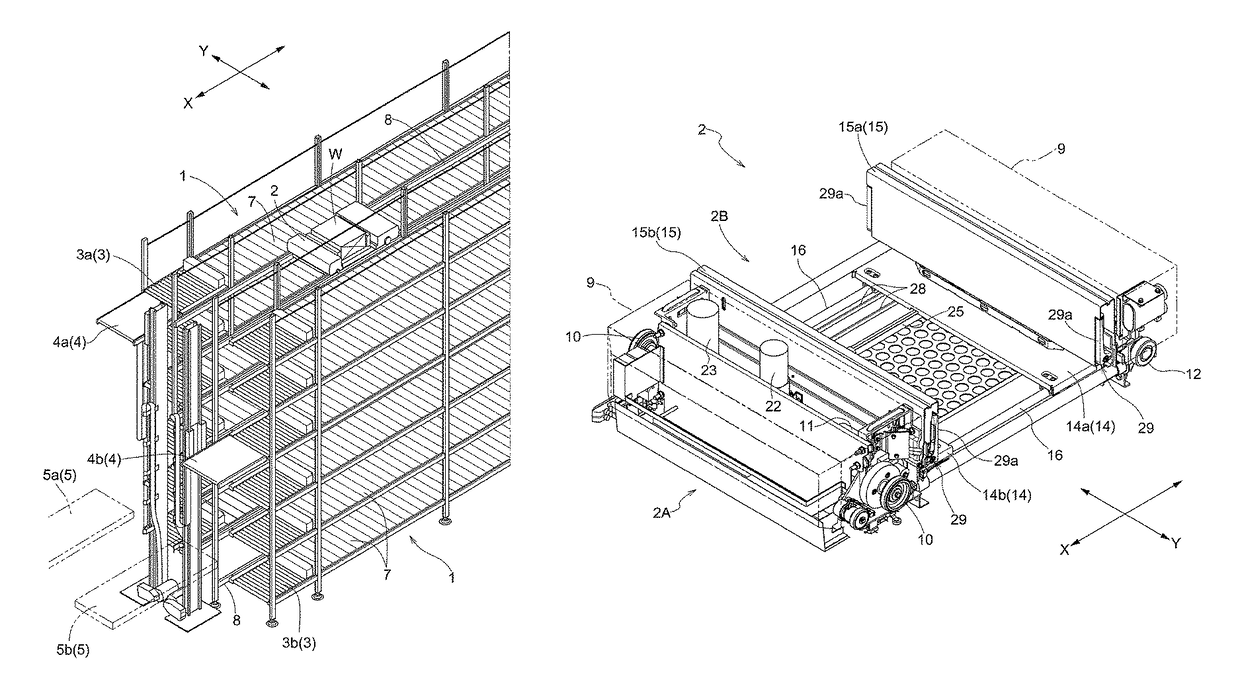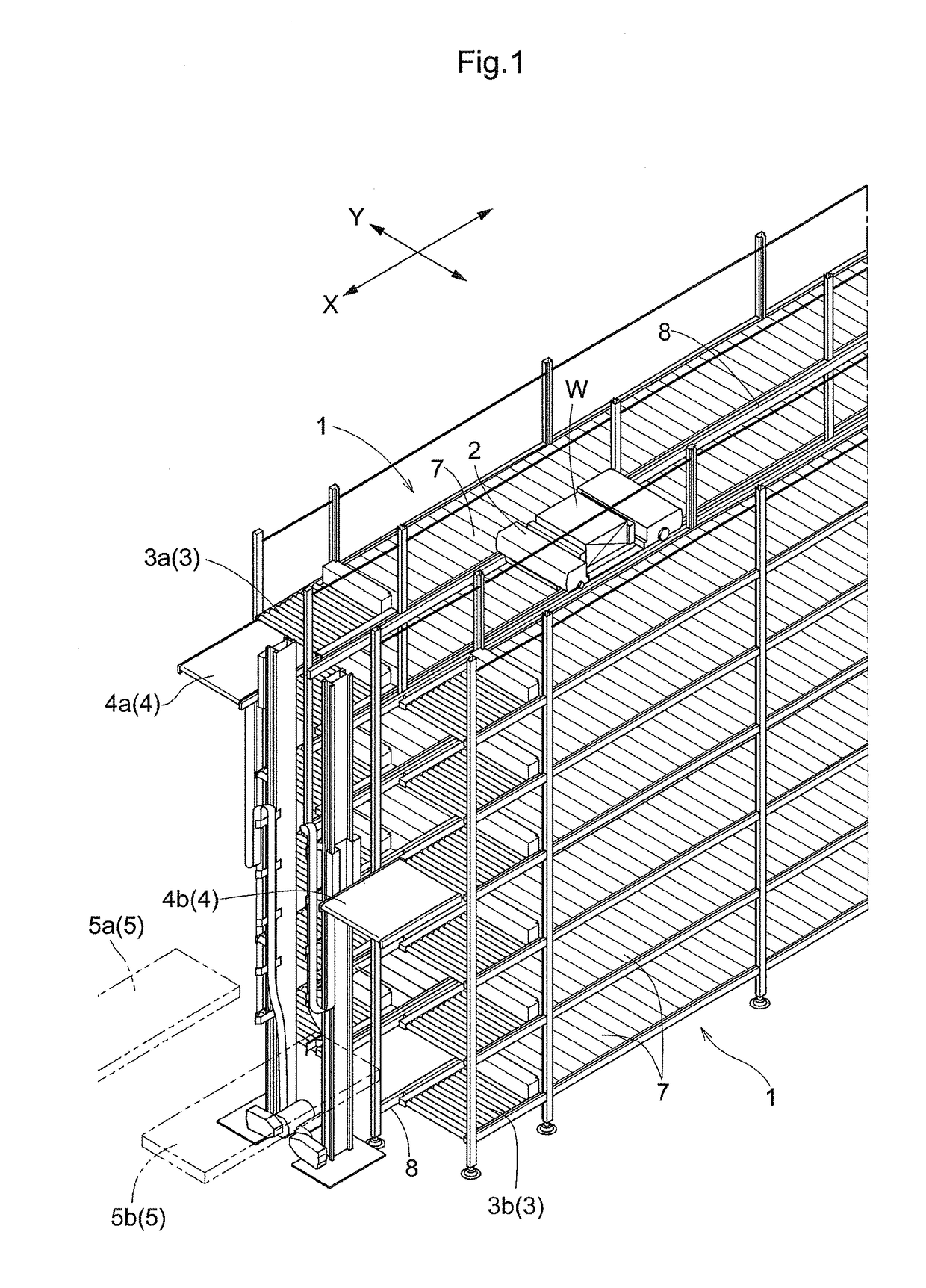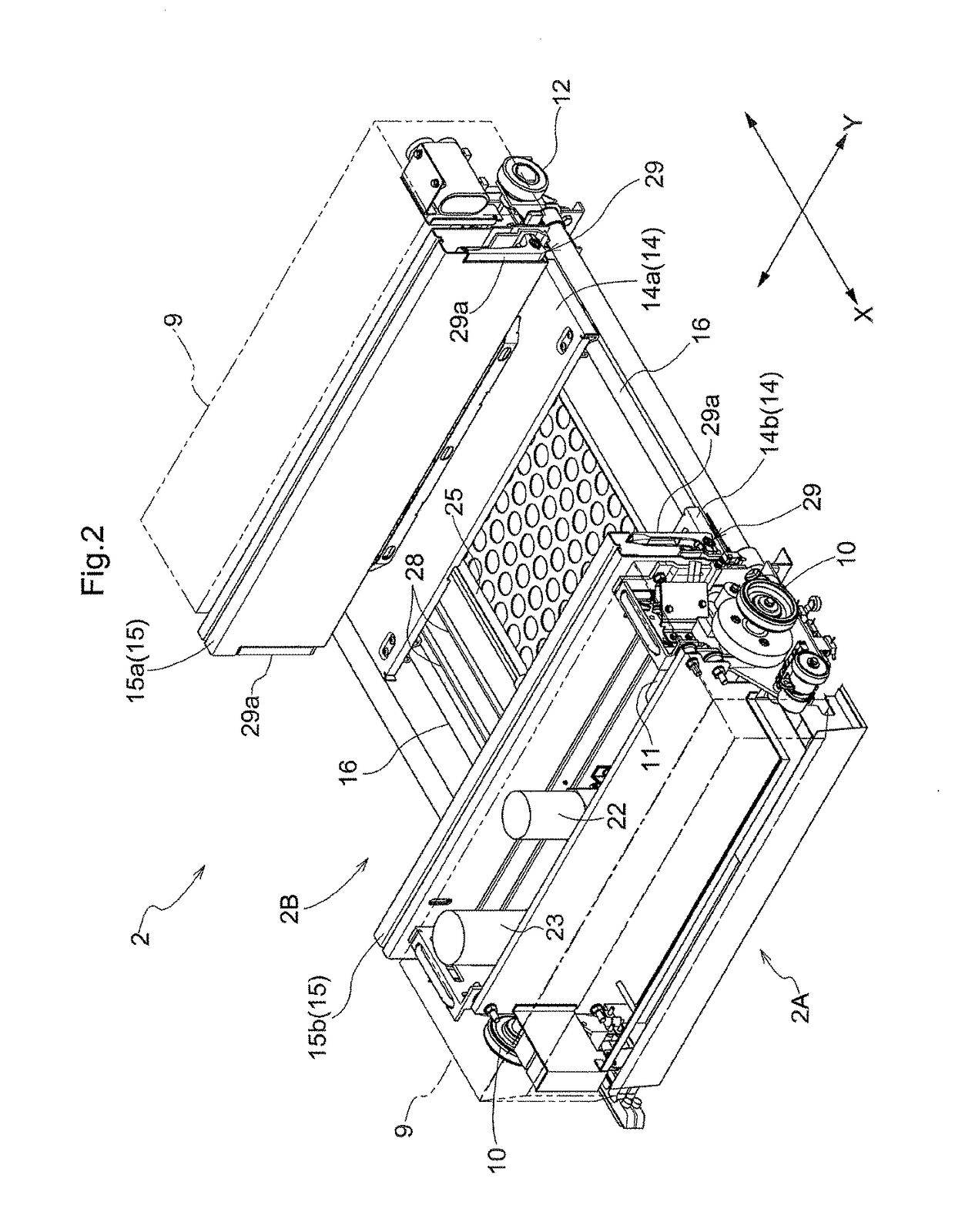Article transfer device and article transport facility
a technology of transfer device and article, which is applied in the direction of electric motor control, transportation and packaging, instruments, etc., can solve the problems of increasing error between reducing and increasing the target rotational speed and the actual rotational speed of the electric motor
- Summary
- Abstract
- Description
- Claims
- Application Information
AI Technical Summary
Benefits of technology
Problems solved by technology
Method used
Image
Examples
first embodiment
[0036]The article transfer device in accordance with the first embodiment is described with reference to the drawings.
[0037]FIG. 1 is a perspective view of an article transport facility which incorporates an article transfer device 2B. As shown in FIG. 1, the article transport facility has article support portions 1 each of which is configured to support articles, and article transports 2 each of which is capable of moving along its travel path. Each article transport 2 is configured to be capable of delivering articles W, one at a time, to either of the article support portions 1 and receiving articles W, one at a time, from either of the article support portions 1 by moving the article W along a transfer direction by means of its article transfer device 2B at predetermined or preset locations along the travel path.
[0038]As shown in FIG. 1, the article support portions 1 are used to store articles W. Travel rails 8 which define the travel path generally extends linearly along a dir...
fourth embodiment
[0115] In the fourth embodiment described above, the case in which an article W being transferred by the hooks 29a collides with a step “d” is described as an example of an external force applied condition (that an external force that causes a decrease in the rotational speed of the projecting and retracting motor 22 is applied) being satisfied. The external force applied condition may also be satisfied when the article W transferred by the hooks 29a collides with other objects. For example, the external force applied condition may be satisfied when the article W being transferred by the hooks 29a comes into contact with components of the article transport facility described above (for example, an article support portion 1, a relay conveyor 3, a load support platform 48, or the component parts of the article transfer device 2B, 2C itself, etc.).
[0116] Any arrangement and structure disclosed in any one embodiment (including the alternative embodiments, which is true of any embodiment...
PUM
 Login to View More
Login to View More Abstract
Description
Claims
Application Information
 Login to View More
Login to View More - R&D
- Intellectual Property
- Life Sciences
- Materials
- Tech Scout
- Unparalleled Data Quality
- Higher Quality Content
- 60% Fewer Hallucinations
Browse by: Latest US Patents, China's latest patents, Technical Efficacy Thesaurus, Application Domain, Technology Topic, Popular Technical Reports.
© 2025 PatSnap. All rights reserved.Legal|Privacy policy|Modern Slavery Act Transparency Statement|Sitemap|About US| Contact US: help@patsnap.com



